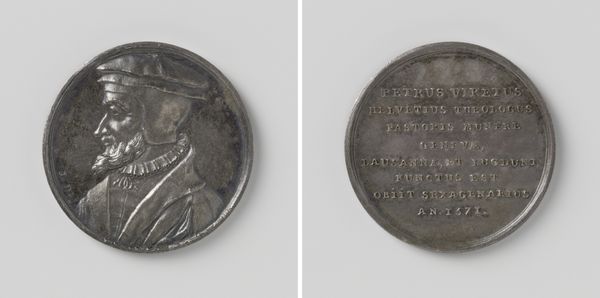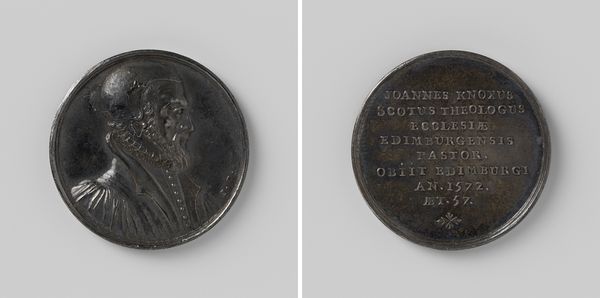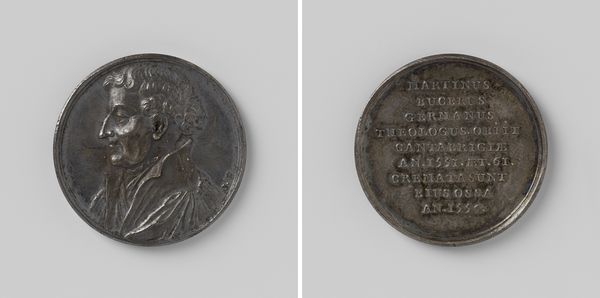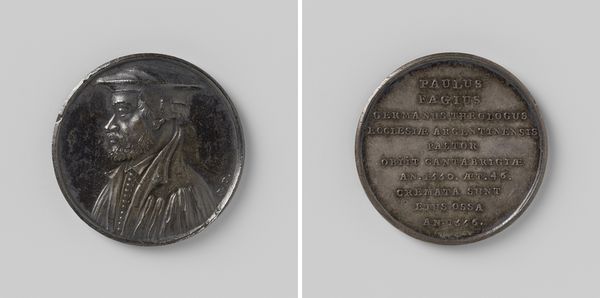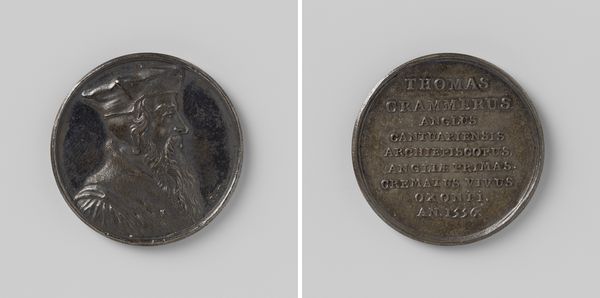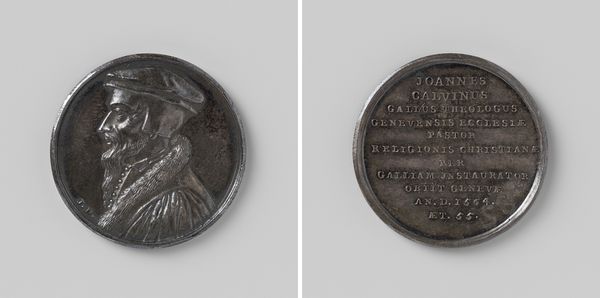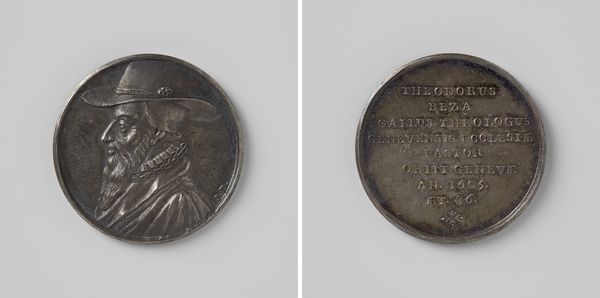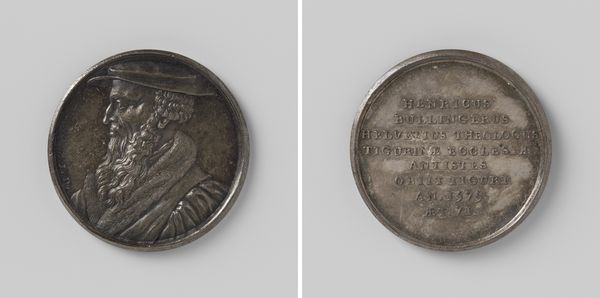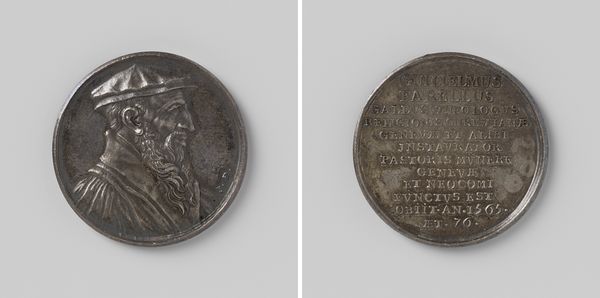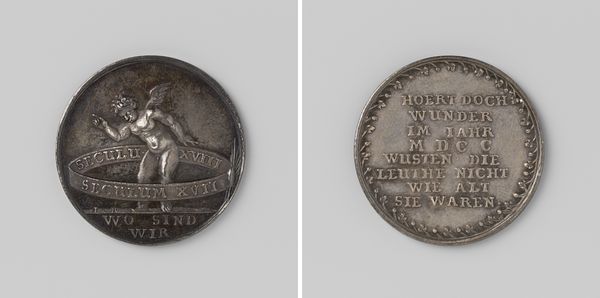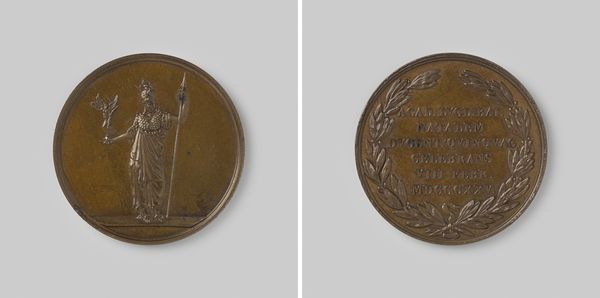
metal, bronze, sculpture
#
portrait
#
baroque
#
metal
#
sculpture
#
bronze
#
sculpture
Dimensions: diameter 2.8 cm, weight 10.27 gr
Copyright: Rijks Museum: Open Domain
Editor: So this is Jean Dassier’s “Death of John Wyclif,” a bronze medal made in 1725. It's stark, with this profile of Wyclif on one side, and the inscription on the other. What do you see in this piece? Curator: I see a potent reminder of the dangers of challenging established power. This medal, created nearly 400 years after Wyclif's death, serves as a memorial to his radical ideas. Knowing Wyclif was condemned as a heretic, even his remains exhumed and burned, how does the text on the reverse hit you? Editor: Well, it’s pretty direct, stating his bones were burned. There's something incredibly forceful in immortalizing not just his life, but the posthumous persecution he faced. Does Dassier take a side through that depiction? Curator: Absolutely. Dassier, by choosing this subject and explicitly detailing Wyclif's fate, participates in a longer conversation about religious authority and the right to dissent. Do you think the choice of bronze lends particular weight to the statement it makes? Editor: Definitely. The durability of the material itself seems like an act of resistance, a refusal to let Wyclif’s story be erased. Curator: Precisely! Bronze carries a sense of permanence, doesn't it? It speaks to the enduring relevance of Wyclif's challenges to the church. It highlights how his story continues to ignite debate. And makes you question if the debates even finished. Editor: It really reframes how I look at historical objects. This isn’t just a medal; it's a defiant declaration across time. Curator: Exactly! Art can bring attention to historical injustices and celebrate radical figures who changed the course of time. It’s an incredible tool!
Comments
No comments
Be the first to comment and join the conversation on the ultimate creative platform.
